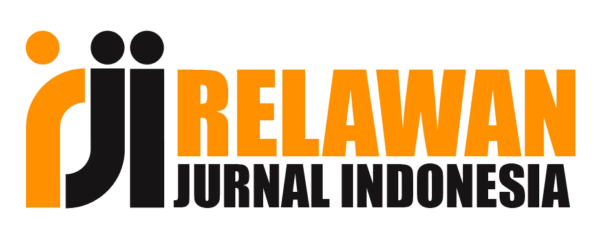Profil literasi saintifik berdasarkan kecerdasan majemuk dan motivasi belajar
Abstract
Burhān al-Dīn al-Zarnūjī in his treatise Ta'līm al-Muta'allim Ṭorīq al-Ta'allum informed that the academic achievement has six things dependency: ingenious acumen (intelligences), fervent desire (motivation), patience (when find difficulties), sufficent sustenance (to complete learning), guidance of a teacher (through learning), and length of time (intensively). Based on this perspective, we was empirically tested students scientific literacy through correlational research. In particular, first, multiple intelligences was examined based on Multiple Intelligences Survey (MIS). Second, science learning motivation was explored used Science Motivation Questionnaire II (SMQ-II). Third, scientific literacy was tested that focused on competence domain and environmental content. The participants of the study were 128 secondary students in Kabupaten Kudus choosen by random sampling technique. We used Pearson r to elaborate relation of scientific literacy with each type of multiple intelligences nor component of science learning motivation. It reveals that naturalistic intelligence and self-efficacy has strong correlation with scientific literacy. The findings suggest that it is important to facilitate students’ intelligence and motivations to guide them on achieving scientific literacy.
Keywords
Full Text:
PDF (BAHASA INDONESIA)References
al-Maḥallī, M. I. A & Al-Suyūṭī, ‘A. A. I. A. B. (2010). Tafsīr al-jalālayn. Cairo: Dār al-Ḥadīts.
al-Syahrostānī, A. A. (2010). Al-Milal wa al-niḥal. Amman: Muassasat al-Ḥalabi.
al-Zarnūjī, B. A. (2014). Ta’līm al-muta’allim ṭōrīq at-ta’allumi. Beirut: Dār ibn Katsīr.
Bandura, A. (2001). Self-efficacy beliefs as shapers of children's aspirations and career trajectories. Child Development, 72 (1): 187–206.
Bryan, R. R. (2011). Motivation, achievement, and advanced placement intent of high school students learning science. Science education, 95(6): 1049-1065.
Candler, L. (2011). Teaching multiple intelligence theory. Teaching Resources.
Dinata, A. N. (2018). The influence of field trip on high school student's scientific literacy and attitude towards science in ecosystem concept. Assimilation: Indonesian Journal of Biology Education, 1(1): 8-13.
Fives, H. (2014). Developing a measure of scientific literacy for middle school students. Science Education, 98(4), 549-580.
Fraenkel, J. R. & Wallen, N. E. (2009). How to design and evaluate research in education (7th ed.). New York. McGraw-Hill Companies.
Gardner, H. E. (1995). Reflections on multiple intelligences: myths and messages. Phi Delta Kappan, 77 (3): 200–209.
Gardner, H. (2000). Intelligence reframed: multiple intelligences for the 21st century. Hachette UK.
Gardner, H. E. (2011). Multiple intelligences : the first thirty years. Harvard Graduate School of Education.
Glynn, S. M., Brickman, P., Armstrong, N. & Taasoobshirazi, G. (2011). Science motivation questionnaire ii: validation with science majors and nonscience majors. Journal of Research in Science Teaching, 48(10): 1159-1176.
Gormally, C. (2012). Developing a test of scientific literacy skills (tosls): measuring undergraduates’ evaluation of scientific information and arguments. CBE—Life Sciences Education, 11(4), 364-377.
Hawking, S. W. & Mlodinow, L. (2010). The grand design. Bantam Books.
Hurd, P. deHart. (1998). Scientific literacy: New minds for a changing world. Science education, 82(3), 407-416.
Jung, R. E. & Haier, R. J. (2007). The parieto-frontal integration theory (p-fit) of intelligence: converging neuroimaging evidence. Behavioral and Brain Sciences, 30(2): 135-154.
Kışoğlu, M. (2018). An examination of science high school students’ motivation towards learning biology and their attitude towards biology lesson. International Journal of Higher Education, 7(1): 151-64.
McKenzie, W. (2005). Multiple intelligences and instructional technology. ISTE - International Society for Technology in Education.
Mo, J. (2019). How is students’ motivation related to their performance and anxiety?. PISA in Focus, 92. Paris: OECD Publishing.
Morris, M. (2004). The eight one: naturalistic intelligence. Dalam Kincheloe, Joe L. (ed.) Multiple Intelligences Reconsidered: 150–176 . Peter Lang.
OECD/ADB. (2015). Education in indonesia: rising to the challenge. Paris: OECD Publishing.
OECD. (2019a). Pisa 2018 assessment and analytical framework. Paris: OECD Publishing.
OECD. (2019b). Science performance (pisa) (indicator). Paris: OECD Publishing.
Rodgers, J. L. & Nicewander, W. A. (1987). Thirteen ways to look at the correlation coefficient. The American Statistician, 42(1): 59-66.
Rosser, A. (2018). Beyond access: making indonesia’s education system work. Sidney: Lowy Institute For International Policy.
Setiawan, A. R., Utari, S., & Nugraha, M. G. (2017). Mengonstruksi rancangan soal domain kompetensi literasi saintifik pelajar smp kelas viii pada topik gerak lurus. Wahana Pendidikan Fisika, 2(2): 44-48.
Setiawan, A. R. (2019). Penerapan pendekatan saintifik untuk melatih literasi saintifik dalam domain kompetensi pada topik gerak lurus di sekolah menengah pertama. Prosiding Seminar Nasional Fisika (SiNaFi) 2018, 4 (1): 7-13.
Shearer, C. B. & Karanian, J. M. (2017). The neuroscience of intelligence: Empirical support for the theory of multiple intelligences? Trends in neuroscience and education, 6: 211-223.
Shearer, C. B. (2019). A detailed neuroscientific framework for the multiple intelligences: describing the neural components for specific skill units within each intelligence. Journal of Psychological Studies, 11 (3): 1-26.
Si'ayah, S. & Setiawan, A. R. (2019). Multiple intelligences survey: analysis on validity and reliability of bahasa indonesia version through different education level. Thesis Commons.
Simpkins, S. D., Price, C. D. & Garcia, K. (2015). Parental support and high school students' motivation in biology, chemistry, and physics: Understanding differences among latino and caucasian boys and girls. Journal of Research in Science Teaching, 52(10): 1386–1407.
Utari, S. (2017). Recostructing the physics teaching didactic based on marzano’s learning dimension on training the scientific literacies. Journal of Physics: Conference Series, 812 (1): 012102.
Waterhouse, L. (2006). Inadequate evidence for multiple intelligences, mozart effect, and emotional intelligence theories. Educational Psychologist, 41:4, 247-255.
DOI: https://doi.org/10.17509/wapfi.v8i2.20924
Refbacks
- There are currently no refbacks.
Copyright (c) 2023 Adib Rifqi Setiawan

This work is licensed under a Creative Commons Attribution-ShareAlike 4.0 International License.
The Journal Wahana Pendidikan Fisika http://ejournal.upi.edu/index.php/WapFi/ is licensed under a Creative Commons Attribution-ShareAlike 4.0 International License
The Journal WaPFi (Wahana Pendidikan Fisika).
All rights reserverd. pISSN 2338-1027 eISSN 2685-4414
Copyright © Faculty of Mathematics and Science Education (FPMIPA) Universitas Pendidikan Indonesia (UPI)










